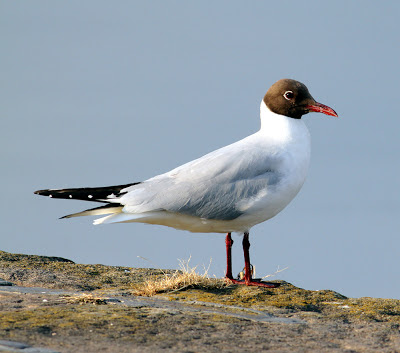After a couple of days with no birding I returned to the fray this morning. But if the birding is a little quiet the current sunny days do at least give a few photo opportunities when birds cooperate.
When I arrived at Conder a juvenile Grey Heron stood waiting for a chance to go fishing. After what seemed ages it finally took the plunge and entered the water as I took several pictures, hoping to get one of the bird grabbing a meal. The heron tried really hard to catch breakfast but I didn't see it take anything from the water; when a car and occupants drew noisily up it fled off over to the creek to try its luck there.
Grey Heron
Grey Heron
Grey Heron
Grey Heron
The Oystercatchers are as aggressive as ever now, even though their chicks are very big, and I watched the adults chasing off a Black-tailed Godwit, a Redshank and then a Lapwing.
Lapwing
Things were much the same on the pool and the creek with 7 Dunlin, 6 Common Sandpiper, 2 Greenshank and 2 Black-tailed Godwits the “cream” of the autumn waders while 70+ Redshank, 21 Lapwing and 4 Curlew made up the numbers. The waders and wildfowl are somewhat repetitive at the moment with just small variations on a daily basis. But hey, no one ever found a bird by staying at home and I need to see birds most days, even though I saw plenty on the other 364 days. After all, “finding comes from seeking”.
Dunlin
Teal increased to 4 today, plus an overflying drake Goosander, the all alone Goldeneye still in-situ, plus 2 Tufted Duck and a single Little Grebe.
Tufted Duck
“Small” and “other” stuff today – 2 Sedge Warbler, 2 Reed Bunting, 6 Linnet, 3 Meadow Pipit, 1 Pied Wagtail, 5 Greenfinch.
Stay tuned to Another Bird Blog - who knows what you might find soon.
Linking this weekend to Camera Critters and Anni's Birding Blog .
Linking this weekend to Camera Critters and Anni's Birding Blog .































































.jpg)













